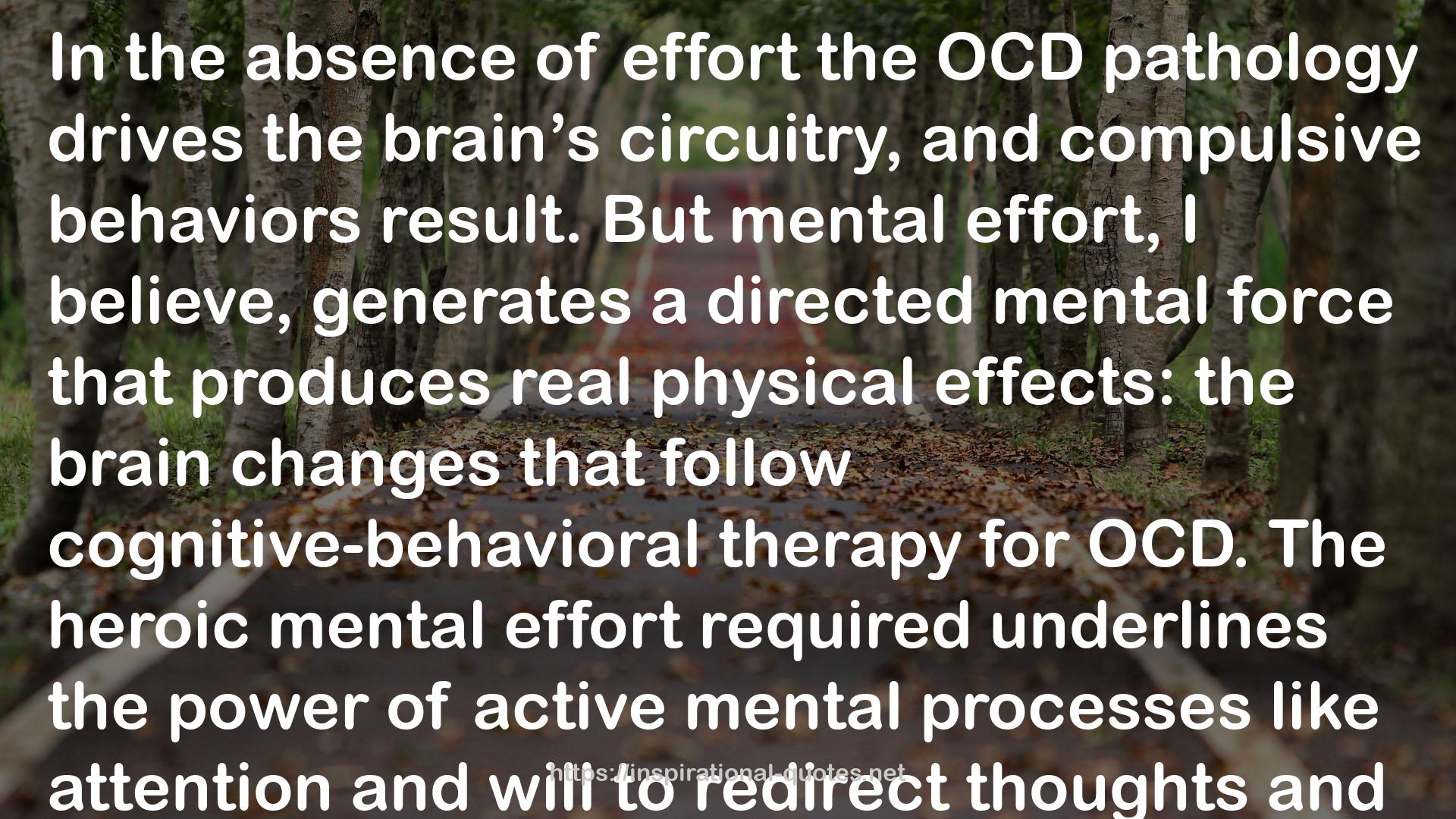" In the absence of effort the OCD pathology drives the brain’s circuitry, and compulsive behaviors result. But mental effort, I believe, generates a directed mental force that produces real physical effects: the brain changes that follow cognitive-behavioral therapy for OCD. The heroic mental effort required underlines the power of active mental processes like attention and will to redirect thoughts and actions in a way that is detectable on brain scans. Let me be clear about where mental effort enters the picture. The OCD patient is faced with two competing systems of brain circuitry. One underlies the passively experienced, pathological intrusions into consciousness. The other encodes information like the fact that the intrusions originate in faulty basal ganglia circuits. At first the pathological circuitry dominates, so the OCD patient succumbs to the insistent obsessions and carries out the compulsions. With practice, however, the conscious choice to exert effort to resist the pathological messages, and attend instead to the healthy ones, activates functional circuitry. Over the course of several weeks, that regular activation produces systematic changes in the very neural systems that generate those pathological messages—namely, a quieting of the OCD circuit. Again quoting James, “Volitional effort is effort of attention…. Effort of attention is thus the essential phenomenon of will. "
― Jeffrey M. Schwartz , The Mind and the Brain: Neuroplasticity and the Power of Mental Force
